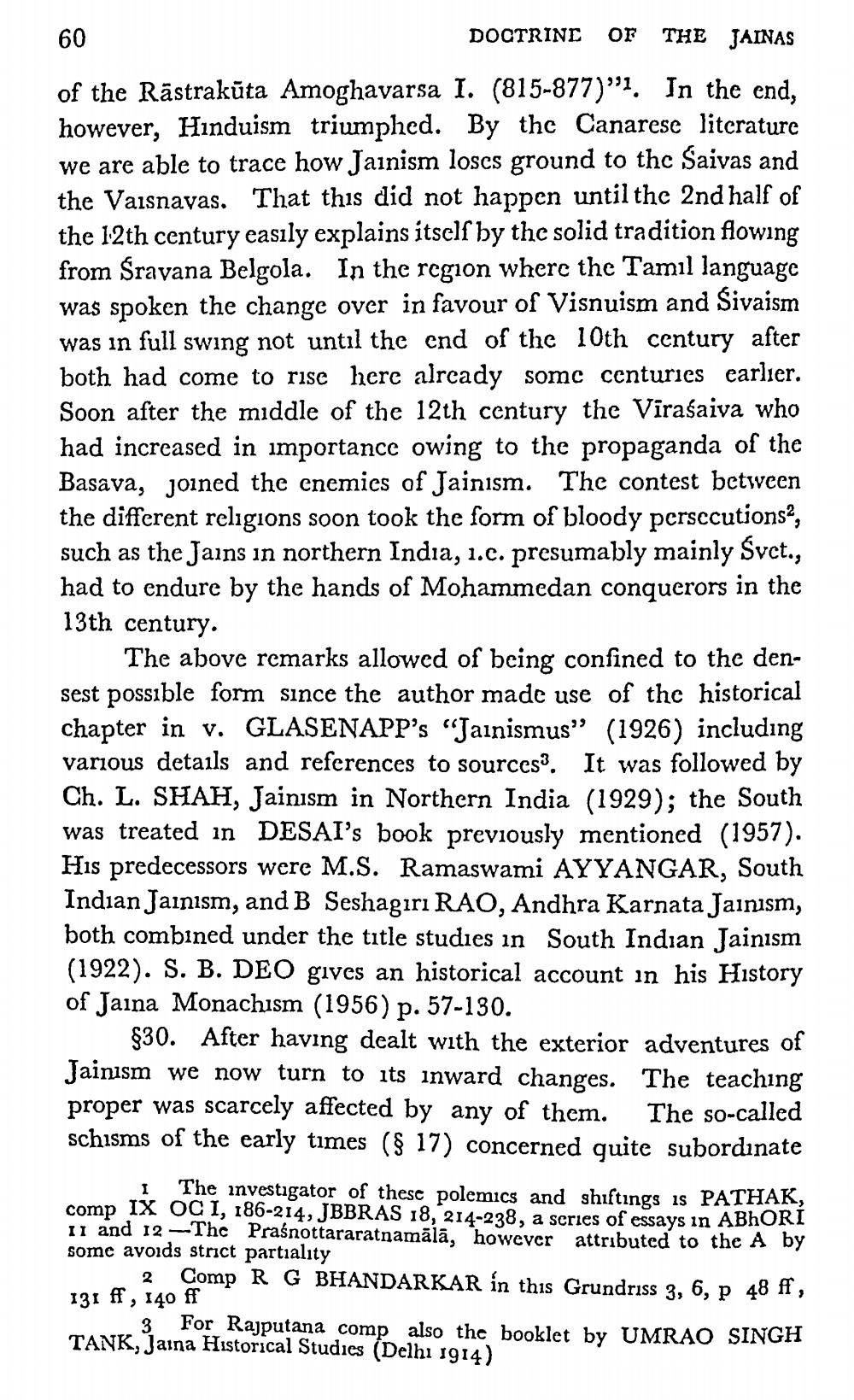________________
DOCTRINE OF THE JAINAS
of the Rāstrakūta Amoghavarsa I. (815-877)"}. In the end, however, Hinduism triumphed. By the Canarese literature we are able to trace how Jainism loscs ground to thc Saivas and the Vaisnavas. That this did not happen until the 2nd half of the 12th century easily explains itself by the solid tradition flowing from Sravana Belgola. In the region wherc the Tamil language was spoken the change over in favour of Visnuism and Sivaism was in full swing not until the end of the 10th century after both had come to rise here alrcady som centuries earlier. Soon after the middle of the 12th century the Viraśaiva who had increased in importance owing to the propaganda of the Basava, joined the enemies of Jainism. The contest between the different religions soon took the form of bloody persccutions, such as the Jains in northern India, 1.c. presumably mainly Svet., had to endure by the hands of Mohammedan conquerors in the 13th century.
The above remarks allowed of being confined to the densest possible form since the author made use of the historical chapter in v. GLASENAPP's "Jainismus" (1926) including various details and references to sources. It was followed by Ch. L. SHAH, Jainism in Northern India (1929); the South was treated in DESAI's book previously mentioned (1957). His predecessors were M.S. Ramaswami AYYANGAR, South Indian Jainism, and B Seshagırı RAO, Andhra Karnata Jainism, both combined under the title studies in South Indian Jainism (1922). S. B. DEO gives an historical account in his History of Jaina Monachism (1956) p. 57-130.
$30. After having dealt with the exterior adventures of Jainism we now turn to its inward changes. The teaching proper was scarcely affected by any of them. The so-called schisms of the early times ($ 17) concerned quite subordinate
I The investigator of these polemics and shiftings is PATHAK, como IX OCI, 186-214, JBBRAS 18, 214-238, a scries of essays in ABHORI u and 12-Thc Praśnottararatnamālā, however attributed to the A by
omc avoids strict parasnottararatnams, 214-238, and shiftings is p
2 Comp R G BHANDARKAR in this Grundriss 3, 6, p 48 ff, 131 ff , 140 ff
3 For Rajputana comp also the booklet by UMRAO SINGH TANK, Jaina Historical Studies (Delhi 1914)




